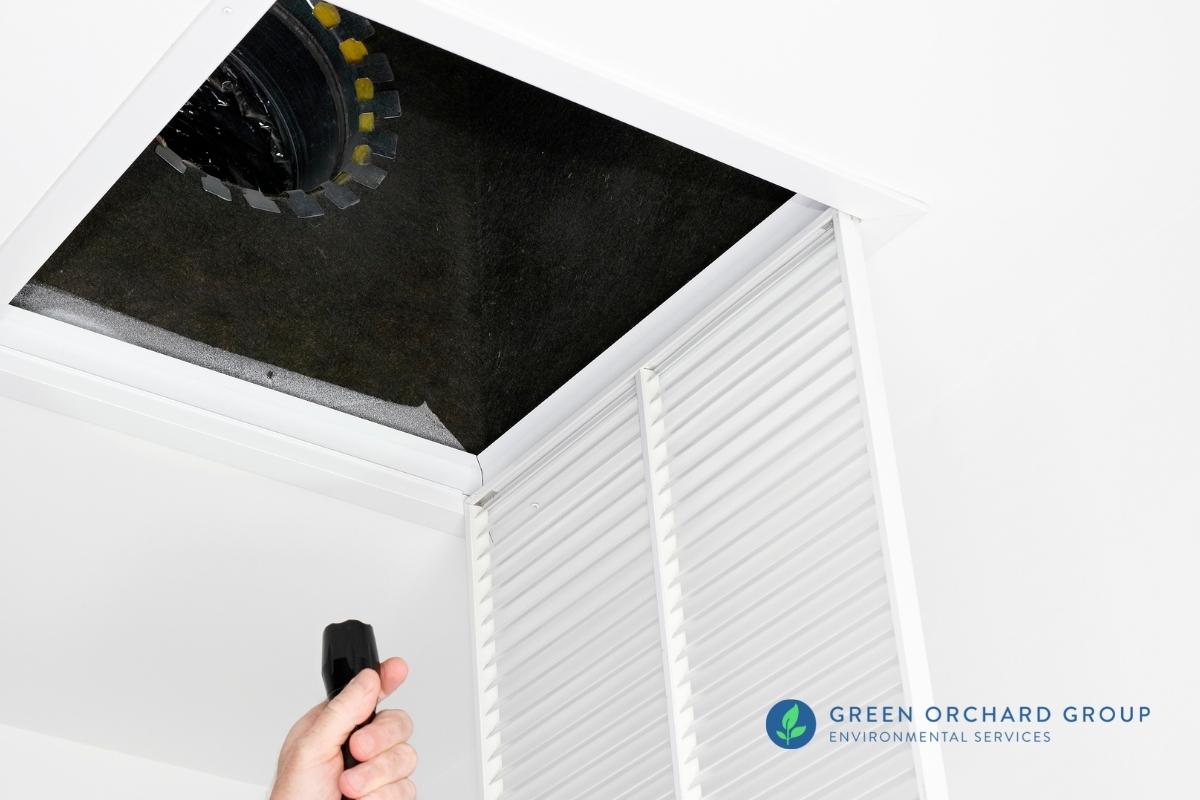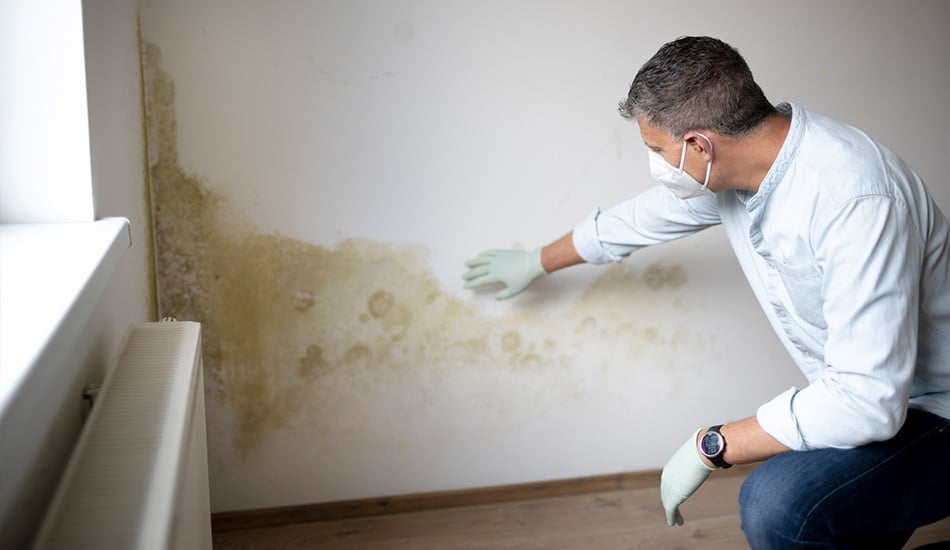Key Steps for Effective Message Mold Removal
Resolving mold concerns in a efficient and timely way is essential for maintaining a healthy and balanced indoor atmosphere. Successfully finishing mold and mildew remediation is a multifaceted procedure that requires attention to information and adherence to details protocols. From checking treated areas to implementing moisture control steps, each action plays a vital duty in ensuring the effectiveness of the remediation procedure. There are key post-remediation steps that are similarly crucial however typically neglected. These steps not only confirm the success of the remediation initiatives yet also add to preventing future mold development.
Assessment of Treated Locations
Upon conclusion of the mold remediation process, a comprehensive evaluation of the dealt with areas is critical to ensure the efficiency of the remediation efforts. This inspection works as an important action in the post-remediation stage to confirm that the mold and mildew elimination and clean-up treatments achieved success in getting rid of the mold and mildew invasion and recovering a risk-free indoor atmosphere. The inspection should be carried out by qualified experts that have the competence to assess the remediated areas diligently.
During the examination, different variables are assessed to establish the success of the removal process. These include aesthetic analyses to check for any type of indications of mold and mildew growth or water damages, dampness levels to confirm that the location is dry and free of excess humidity that can advertise mold re-growth, and air high quality screening to guarantee that the indoor air is secure to breathe. Furthermore, the examination might entail using specialized tools such as dampness meters and thermal imaging video cameras to detect hidden mold or moisture pockets that might bring about future mold troubles if left uncontrolled. In general, a thorough evaluation of the dealt with locations is crucial to confirm the effectiveness of the mold and mildew removal efforts and provide satisfaction to the owners of the residential property.

Dampness Control Measures
Reliable dampness control actions are essential for preventing mold development and preserving a healthy interior setting. Additionally, making use of dehumidifiers in moist areas can aid lower humidity degrees, making it harder for mold to prosper.
Routinely maintaining the structure and inspecting's outside can likewise avoid wetness invasion. Post Mold Remediation Report. Making sure that gutters are clear, downspouts direct water far from the structure, and the roof covering is in excellent problem can help protect against water from seeping right into the building. Appropriately sealing home windows and doors can likewise help maintain dampness out
In situations where water damage occurs, timely action is required. Any type of leakages or spills ought to be cleaned up and dried within 24-48 hours to avoid mold and mildew growth. Using dampness meters can help discover hidden sources of water and ensure comprehensive drying out. By executing these wetness control measures, the danger of mold repeating can be significantly decreased, producing a healthier indoor environment.
Correct Ventilation Analysis
An essential aspect of guaranteeing a healthy and balanced interior atmosphere post mold removal is performing a thorough analysis of the site here air flow system. Proper ventilation evaluation plays a crucial function in stopping future mold growth and preserving air high quality within the afflicted area.
Furthermore, assessing the ventilation system includes analyzing the circulation of air throughout the location to determine any type of locations of inadequate circulation where dampness and pollutants can accumulate. Appropriate ventilation not just aids in regulating humidity levels yet additionally help in getting rid of airborne mold spores and various other toxins, thereby improving general interior air quality. By attending to any kind of air flow issues post mold remediation, homeowner can produce a much healthier and a lot more comfy setting for owners while reducing the risk of mold re-infestation.
Cleaning and Disinfection Protocols
To guarantee detailed mold remediation, careful adherence to certain cleansing and sanitation procedures is imperative. Cleaning and sanitation methods play an essential duty in the post-mold removal stage to stop the reoccurrence of mold growth and ensure a safe and healthy and balanced atmosphere. The initial step in this process is the elimination of any kind of visible mold development making use of proper cleaning agents and techniques. It is important to use EPA-approved fungicides and anti-bacterials to successfully get rid of mold spores and prevent their regrowth.
After the first cleaning, extensive disinfection of the affected locations is necessary to kill any kind more of remaining mold and mildew spores and prevent their proliferation. This action is vital in preventing the spread of mold and mildew to other components of the home. In addition, executing preventive actions such as applying mold and mildew inhibitors and preserving correct ventilation can assist decrease the risk of future mold and mildew problems. By following stringent cleansing and disinfection procedures, property owners can make sure the effective removal of mold and develop a healthy and balanced indoor atmosphere for passengers.
Tracking and Maintenance Plan
Implementing a normal tracking and maintenance strategy is necessary for guaranteeing the long-term performance of mold remediation initiatives. Once mold and mildew remediation is finished, it is vital to establish a monitoring routine to assess the success of the removal procedure.
Furthermore, developing an upkeep plan is crucial to avoiding future mold problems. This plan might include activities such visit this website as repairing pipes leaks, improving ventilation, and controlling interior humidity degrees. Regular upkeep not just assists in protecting against mold yet also adds to maintaining a healthy and balanced interior atmosphere. It is suggested to document all surveillance and maintenance tasks to track development and make certain uniformity in the maintenance of the remediated areas. By carrying out a comprehensive tracking and upkeep plan, the risk of mold and mildew re-emergence can be significantly minimized, advertising a risk-free and tidy living or workplace.
Verdict
Finally, effective article mold remediation entails detailed examination of dealt with areas, implementation of dampness control procedures, evaluation of proper air flow, adherence to cleansing and sanitation protocols, and facility of a tracking and maintenance strategy. These crucial steps are important to make certain that mold development is successfully eliminated and protected against from persisting in the future. By following these standards, residential property owners can keep a risk-free and healthy and balanced atmosphere for occupants.
Upon conclusion of the mold and mildew remediation procedure, a complete evaluation of the dealt with areas is essential to make sure the effectiveness of the removal initiatives. These consist of visual analyses to check for any kind of signs of mold development or water damage, wetness degrees to confirm that the area is complimentary and dry of excess humidity that might advertise mold re-growth, and air high quality screening to ensure that the indoor air is risk-free to take a breath. Additionally, the evaluation might entail using specialized tools such as wetness meters and thermal imaging electronic cameras to spot concealed mold and mildew or moisture pockets that could lead to future mold issues if left uncontrolled. By addressing any ventilation problems publish mold and mildew removal, residential or commercial property owners can produce a much healthier and a lot more comfy setting for occupants while reducing the risk of mold re-infestation.

Comments on “Necessary Actions After Mold Remediation”